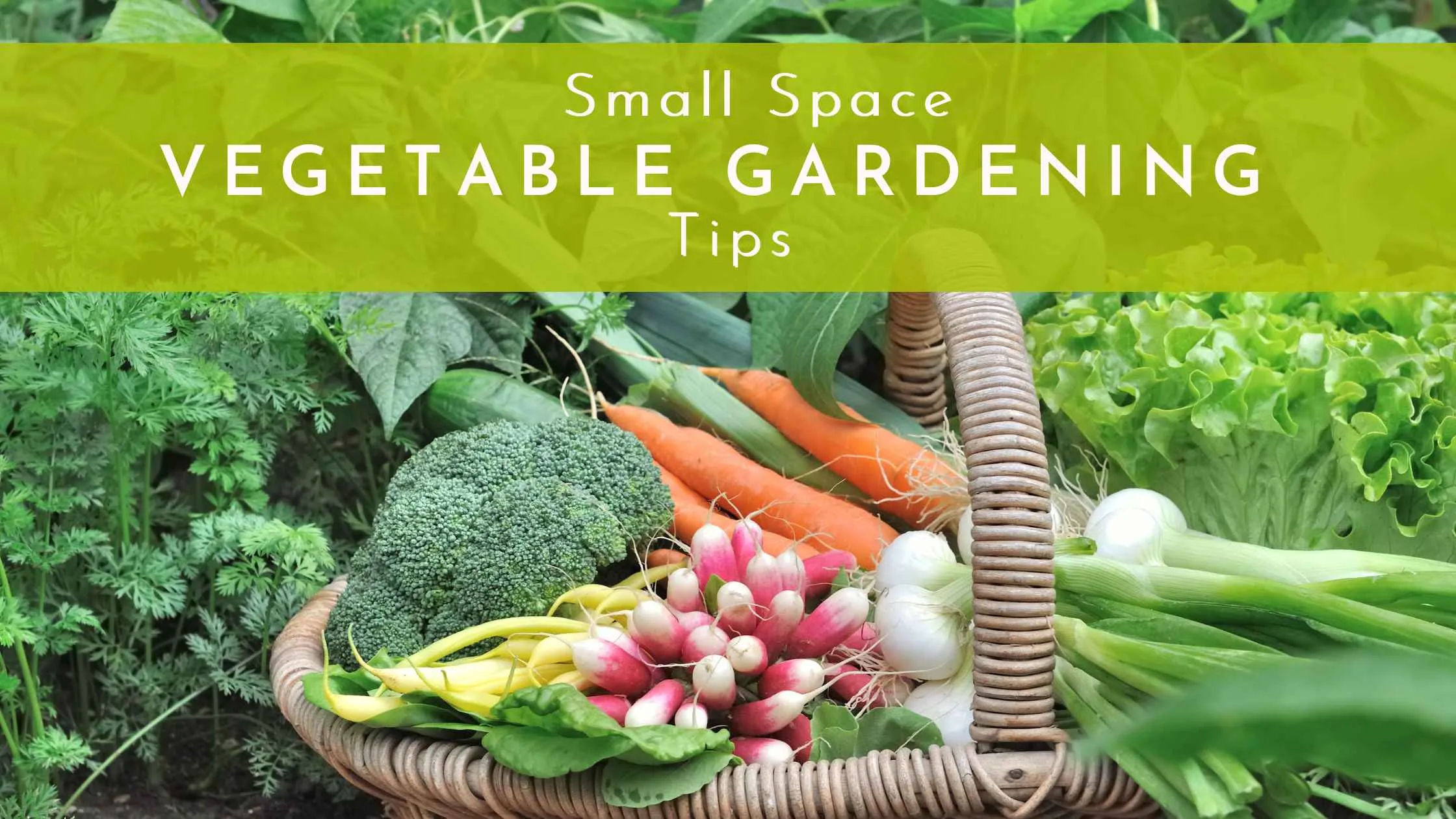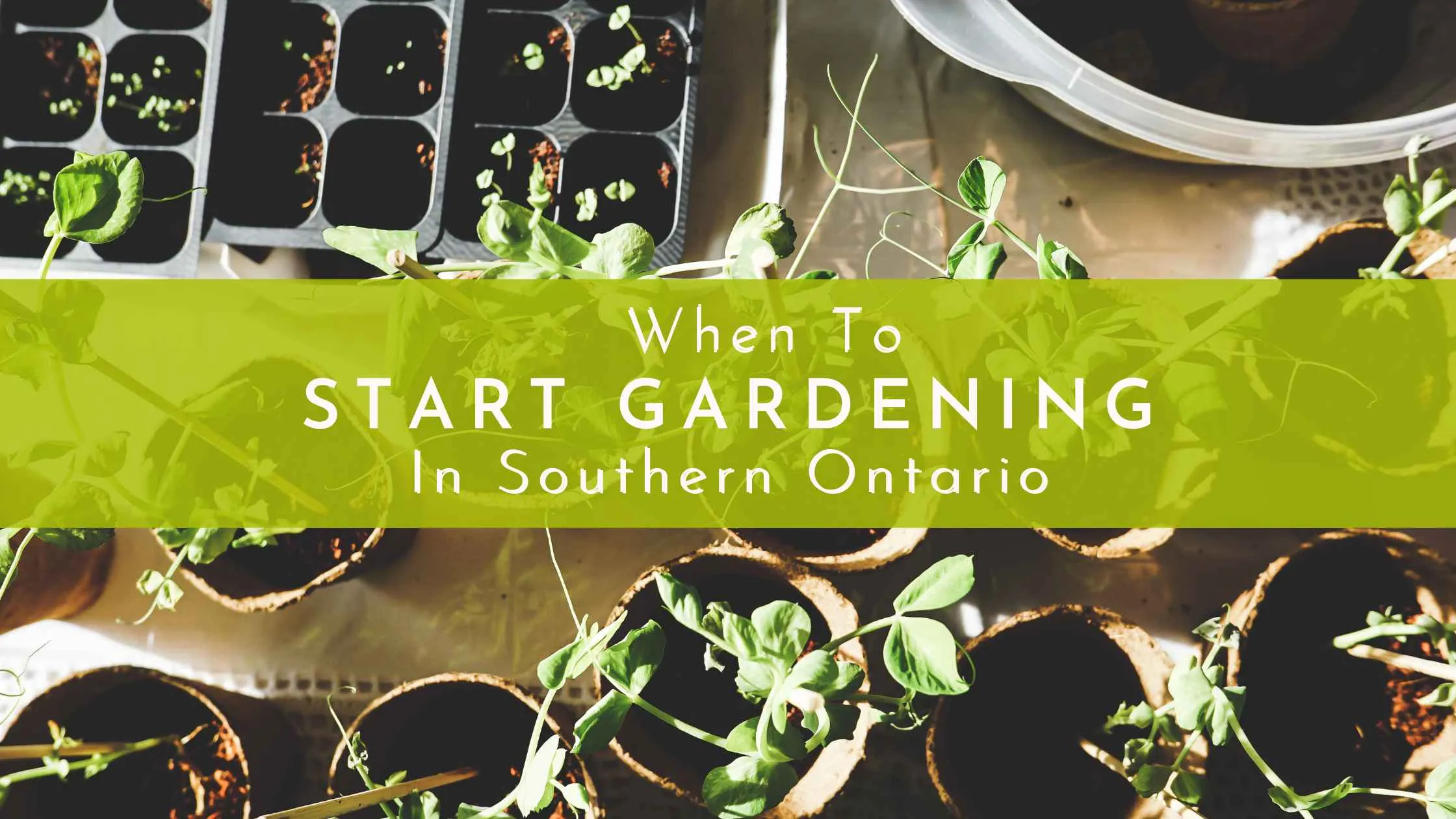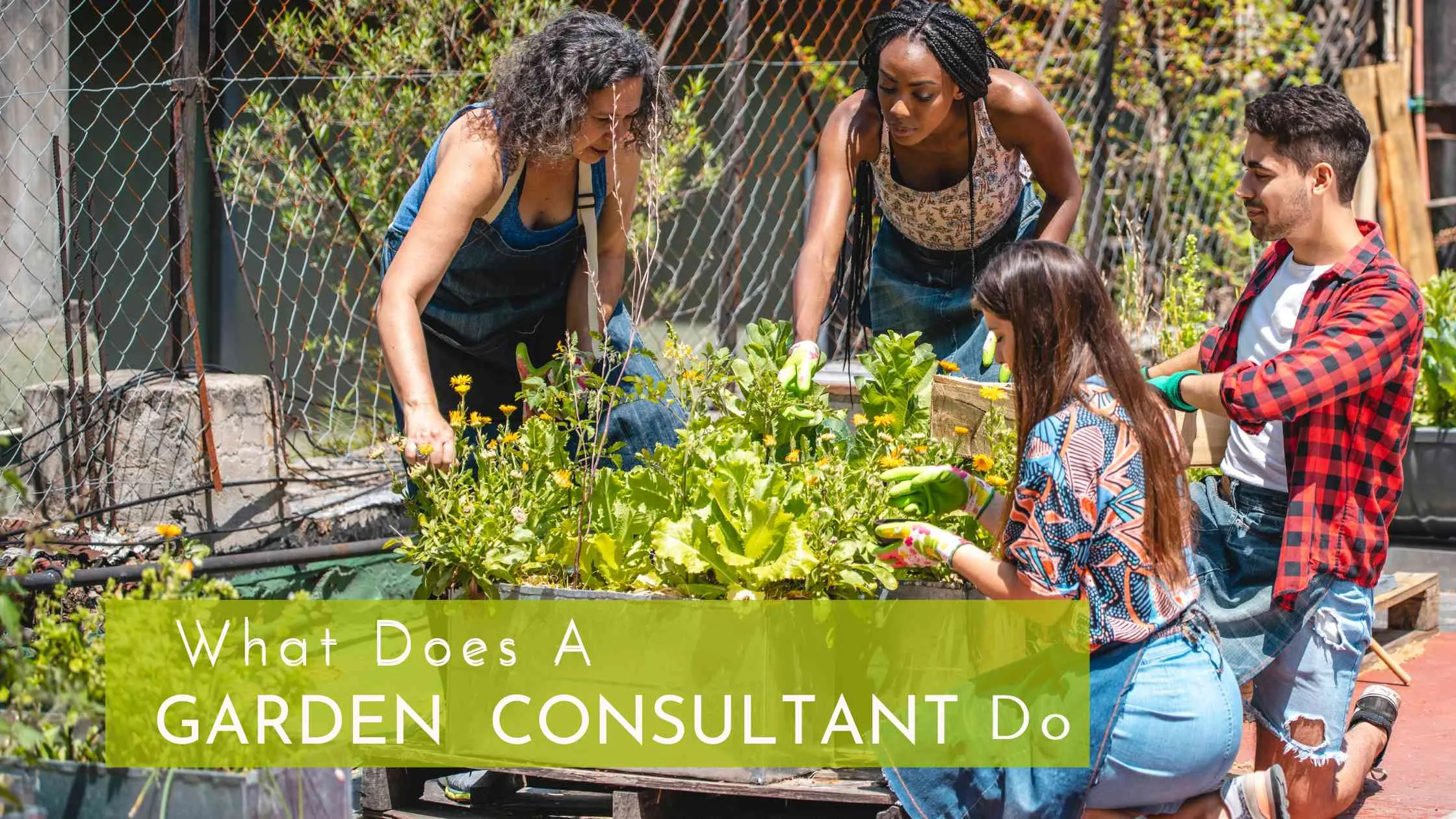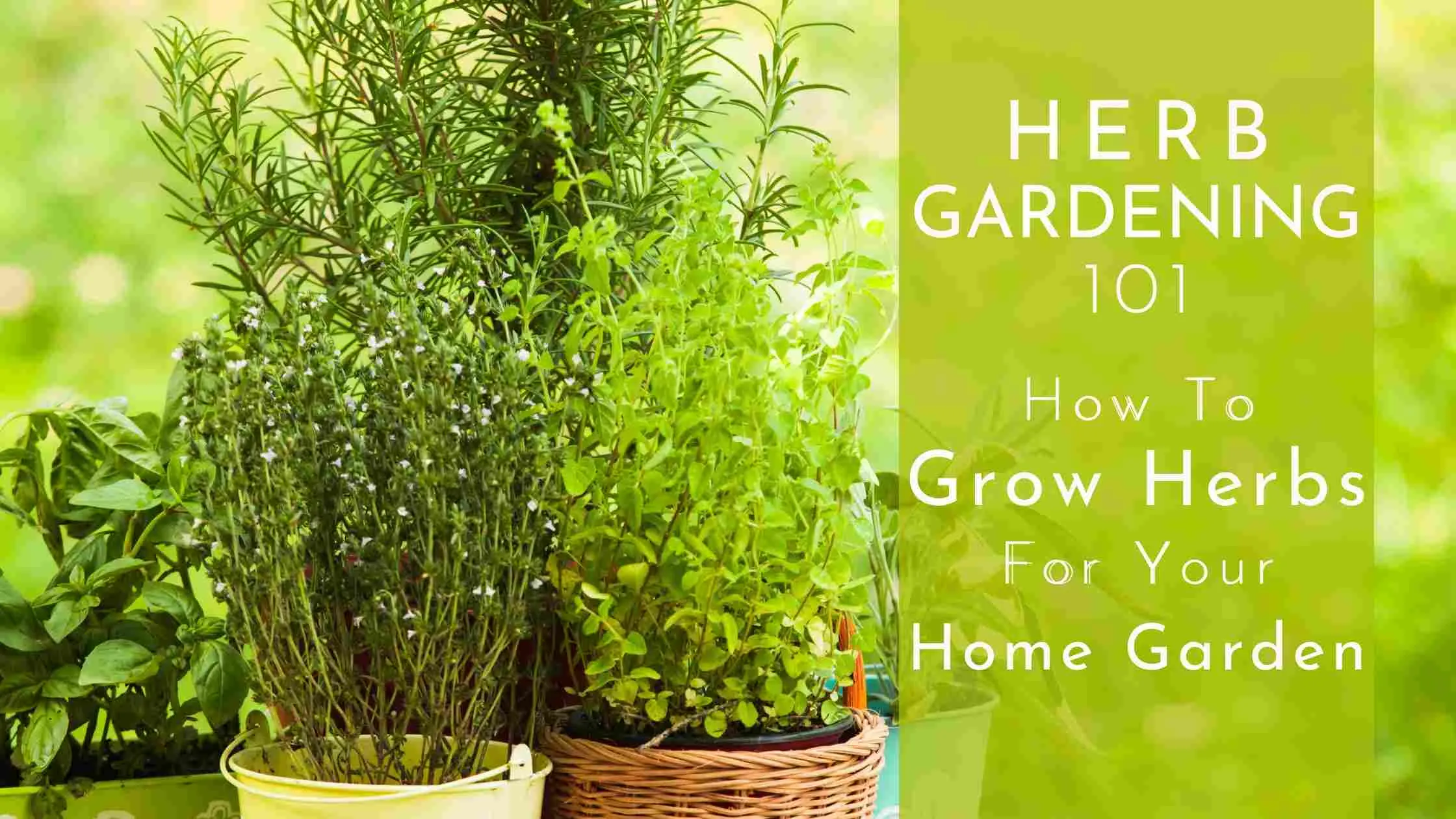How To Grow Peppers In Ontario
Growing peppers from seeds can be a challenging task, especially for beginners. But it is actually easy. Growing peppers takes patience as they need a lot of time to germinate from the seeds. But your patience will be rewarded with aromatic and flavorful home-grown peppers.
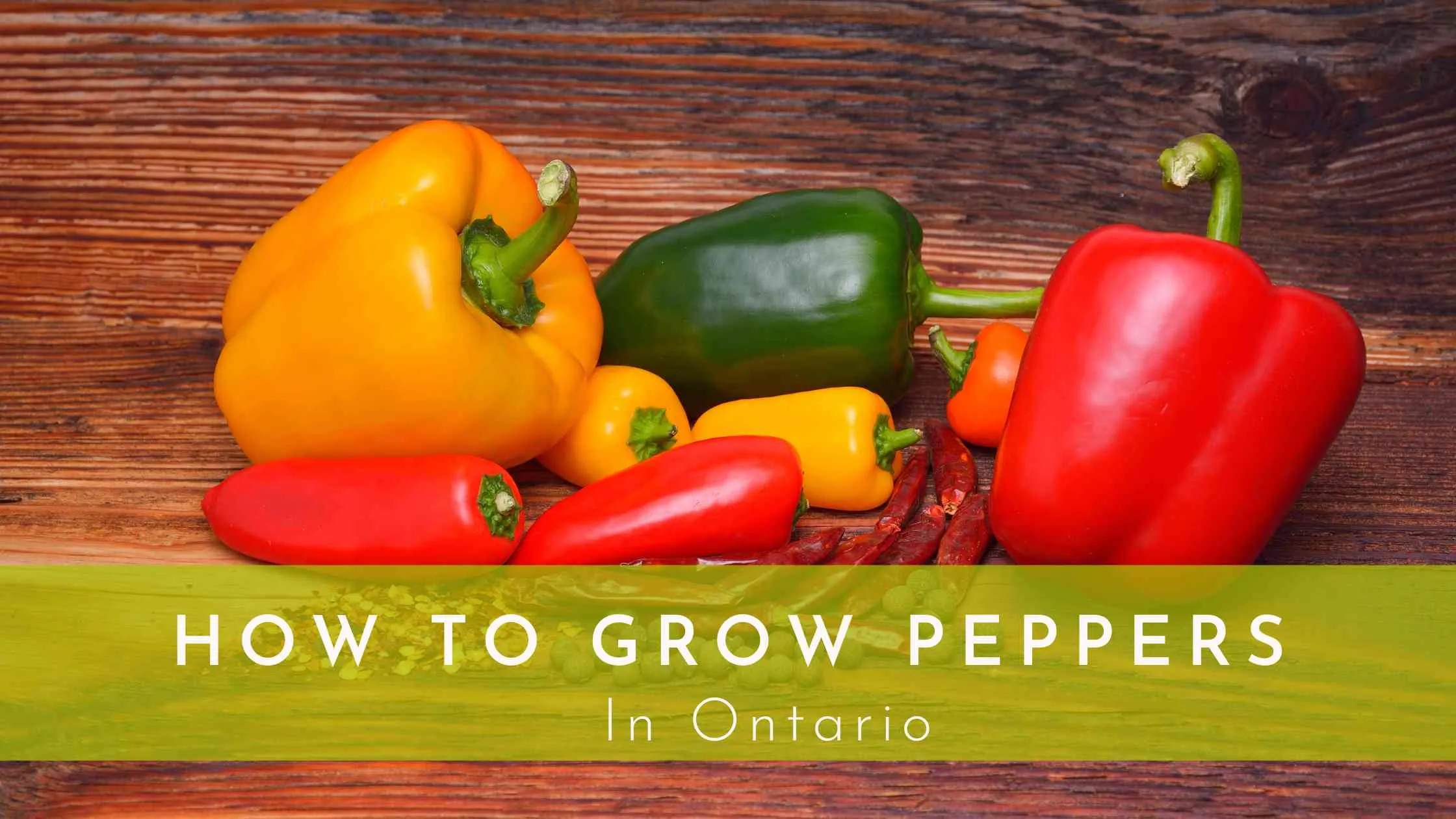
Gardeners use different strategies and techniques to grow peppers. Some prefer growing them in containers or pots, while others prefer garden space. If you know the right strategy and trick you can grow a garden flourished with organic peppers.
In this article, we have created a step-by-step guide for you to start growing peppers in Ontario.
Growing Peppers In Ontario
Pepper (or capsicum) is a tropical plant with a long growing season. It comes in different sizes, colors, tastes, and shapes. Peppers grow well in warm climates, so some people may think it is not possible to grow them in every environment, especially in an area with cooler climatic conditions like Ontario.
Latin:
Capsicum annuum, C. baccatum, and C. chinense
Family: Solanaceae
Difficulty:
Moderately difficult
Season:
Warm season
Exposure:
Full-sun
Some varieties of peppers, like hot peppers, can grow well in cool summer, so you should select the varieties that can be grown in your area. If your hot peppers don’t fully color up, place the plant in a warm and dry area.
If you search the web, there are dozens of possible methods to grow peppers from seeds. Here, we bring a simple and complete guide on growing peppers in Ontario. This guide includes everything from the method, initiating timing, basic instructions, germination time, seedling care, transplantation, and more.
Types Of Pepper Seeds To Grow
There are dozens of pepper seeds available in the market to grow. Usually, garden centers only carry a few varieties but the diversity is just amazing.
Each variety of pepper offers a different flavor such as the sweetness of banana peppers, the mild flavor of bell peppers, the medium heat of chilies, and the spiciness of cayenne.
The two main types of peppers include sweet pepper and hot pepper. These types are further categorized into numerous sub-varieties that vary in size, shape, taste, color, and heat level.
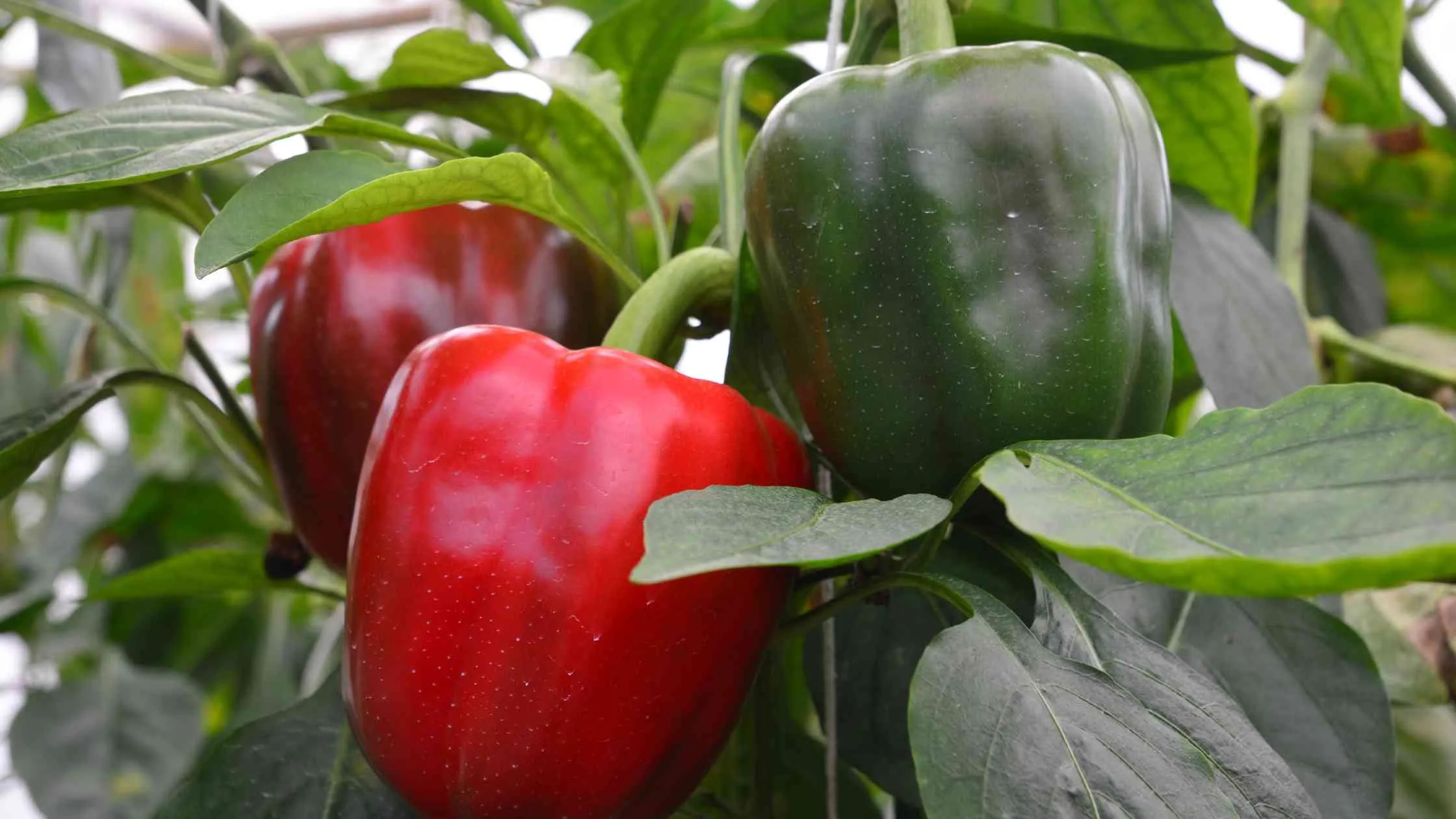
Sweet Peppers
Sweet peppers include several types of bell pepper including California Wonder, King of North, Yolo Wonder, and Purple Beauty. They have a mild and sweet taste. Other varieties such as Carmon, Marconi, Corno Di Toro Pepper, and sweet banana peppers are great for grilling, stuffing, or frying.

Hot Peppers
Hot peppers are also known as Chile or chili peppers. These are spicy hot peppers because of the presence of a chemical called capsaicin. The most commonly used hot peppers are Cayenne, Hungarian Yellow Wax, Serrano Chile Peppers, Jalapeno, and Anaheim.
Easiest Peppers To Grow
Sometimes, when you don’t have enough time to wait for the long process of pepper seed germination, you should try growing capsicum annuum. Capsicum Annuum is one of the easiest pepper plants to grow. It includes varieties of jalapenos, poblano, serranos, Hatch, cayennes, Thai peppers, and many more. These pepper plants can also thrive in cooler temperatures and germinate at relatively lower temperatures.
Avoid Chinese pepper species, such as habaneros, scotch bonnets, and super-hot because they take a lot of time to germinate and demand high soil temperatures.
Where To Get Seeds
Many garden centers in Ontario offer good-quality pepper seeds. You can also purchase pepper seeds from local markets and get your favorite varieties. Other places to purchase quality seeds suited to the Canadian environment are McKenzie Seeds, OCS Seeds, West Coast Seeds, and Stokes Seeds.
When To Start Pepper Seeds
Timing
Peppers usually need more time for seed germination, growing the seedlings, flower development which then gives way to the fruit. To give enough time for your pepper plants to grow well, you can start the plant indoors, six to eight weeks before the last frost.
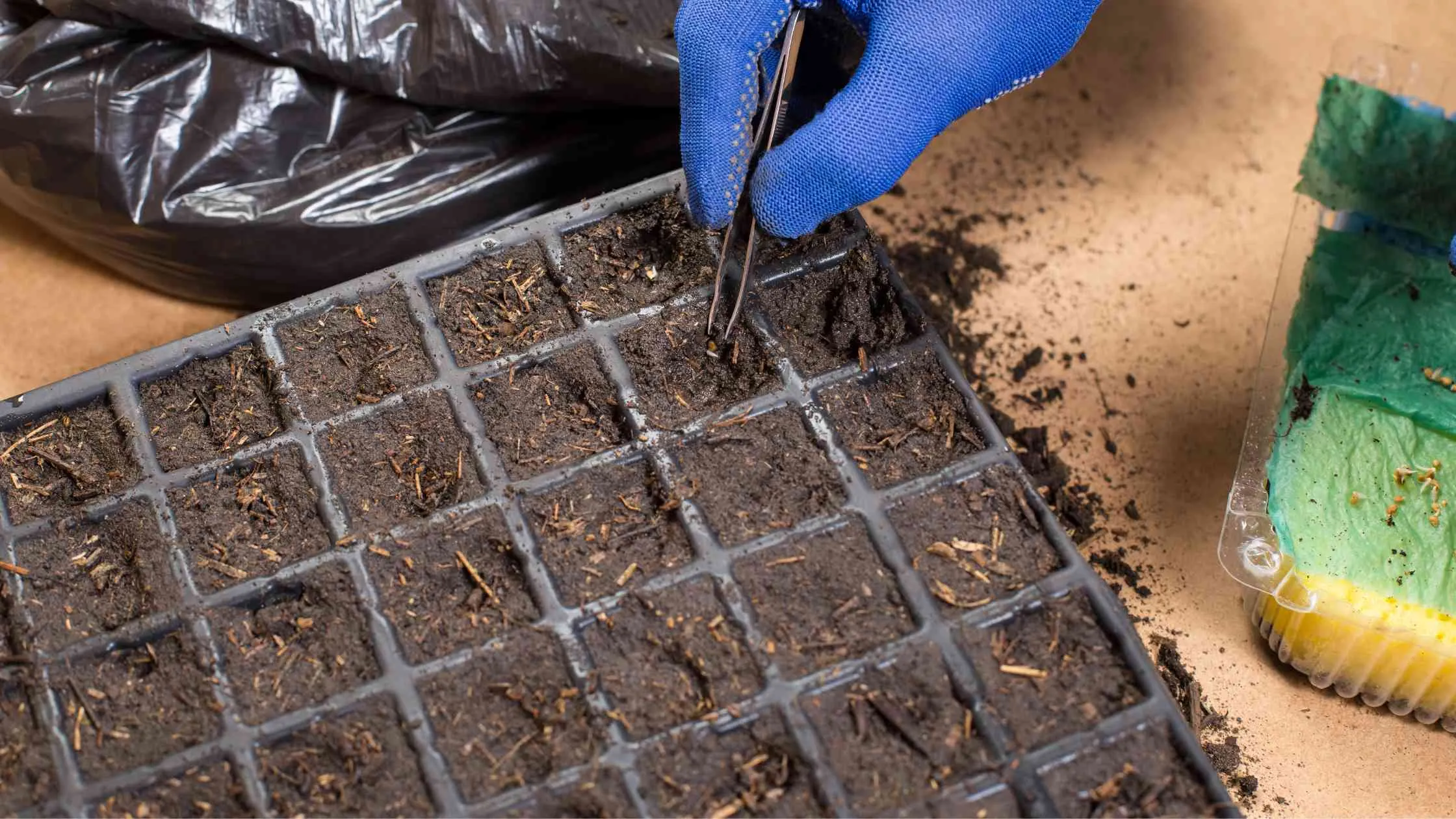
Starting
If you are starting the seeds indoors, sow them 5mm to 1cm deep in warm soil. You can also use seedling heating mats to speed up the germination process.
The ideal temperature for your seedlings is 18 to 24°C (64-75°F) during the day and 16 to 18°C (61-64°F) at night time.
How Long Does It Take For The Seeds To Sprout
Seeds of a pepper plant usually sprout between 10 to 21 days, at a temperature of 21-27°C (70-80°F). Some pepper plants can take more or less time, depending on the variety. For instance, hot peppers can take as long as 6 weeks just to sprout.
Planting Pepper Seeds
Here are some tips for planting pepper seeds:
Always Use Fresh Seeds
Pepper seeds can be preserved for up to 25 years in ideal conditions, but the seeds stored for 2 to 5 years are considered ideal for good germination rates. The seeds should always be stored in a cool, dry, and dark place.
You can still use older seeds stored for a few years but plant them as early as possible. The older the seed, the less likely their sprouting chances are – older seeds germinate at a lower rate and some might even not germinate at all.
Temperature and Moisture Requirements
Pepper seeds need constant moisture and warmer soil for successful seed germination. The ideal soil temperature should be of 21-27°C (70-80°F) to increase the growth rate. Avoid germinating peppers in a greenhouse or cold room because the temperature could drop and reduce the chances of sprouting.
Consider planting one pepper plant in each pot. When the seeds sprout, pluck the extra seedlings or move them to another pot to give maximum space to the strong seedlings.
Growing Peppers From Seeds
You don't need to prepare pepper seeds for planting as they don't require any soaking or nicking. Just put the seeds directly into the soil and they will sprout.
Gardening Supplies
To grow peppers from seeds, you should have the following gardening supplies and equipment:
- Seeds
- Starting soil
- Water
- Latex gloves (to plant hot pepper varieties)
- Seedling tray (or flat) with lid
- Heating mat
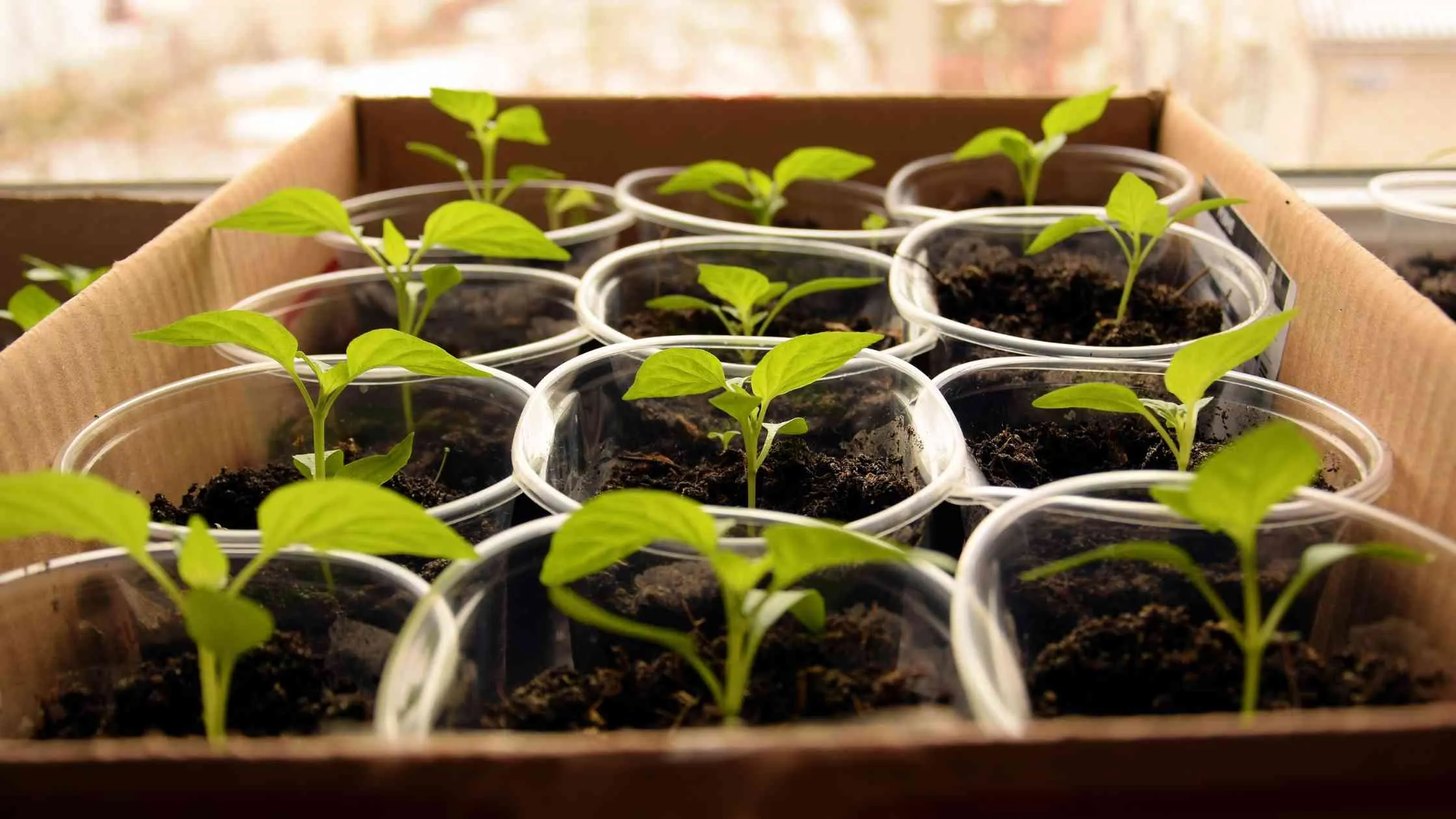
Growing Peppers From Seed: Step-by-Step
The following is the general guide to growing any kind of pepper from seeds:
- Fill up the seed trays or pots with seed-starting soil and keep the soil damp.
- If you are using new seeds, you can plant one seed in each pot or tray cell. However, if you are using older or low-quality seeds, you should plant 2 to 3 seeds per pot. To be on the safe side, I always plant 2 to 3 seeds per cell.
- To plant the seed, keep a trick in mind: The planting depth should be twice as deep as the width of the seed. So if the pepper seeds are about 1/4″, the depth the seeds should be planted 1/2″ deep. You can plant them by putting the seeds on the soil and gently pushing them in the soil or by making little holes and putting the seeds in them.
- Cover the seeds with soil and gently press the soil in the holes. The seeds should come in contact with the soil but don't compact it.
- You can use wet soil or simply water it after planting the seeds. If the excess water is not absorbed, You can dump it out.
- Cover the planting tray or pots with a plastic lid or covers to keep the soil moist and warm.
- The pots or seed tray should be placed somewhere warm. You can also put them on a heat mat to increase the germination rate. If the temperature is colder, the germination can slow down or the seeds might not grow at all.
Related: How To Start Seeds Indoors
Seed Starting Time
Pepper seeds like warm temperatures, so keep them indoors until the weather is warm. They can get stunted if the temperature is below 10°C (50˚F).
If you have room to keep the seeds indoors in a warm and moist environment, you can start them earlier until the last frost date has passed. When the night temperature reaches 15-21°C (60-70˚ F), you can transplant your seedlings outdoors, to give them enough space for roots to grow.
Pepper Seeds
Although pepper seeds don't require soaking, you can soak the seeds in warm water before you plant them. The soaked seeds will sprout faster than the others. Keep three seeds in each glass and use only one of them to produce a plant.
Sometimes, seeds sprout but don't survive to become a healthy producing plant. To make sure you get at least one healthy plant of each variety, grow 5 to 6 seeds of them. After the seeds sprout, they are ready to be planted into the seed starting soil or peat pellets.
What Are Peat Pellets?
The peat pellet is a compressed disk, used for sprouting seeds. It is an excellent choice for successful germination results. The pellet work as a greenhouse dome for seeds and help them to sprout quickly, even during winter.
To make the pellet work, all you have to do is water the peat. The peat will absorb the water, expand and create a self-contained pot. When the pellet is fully expanded, pull back the mesh and dig a hole in it as deep as ¼". Place three same pepper seeds and cover them with loose soil, without patting.
Once the seeds start sprouting, remove them from the peat pellet and place them in contact with the sunlight.
Soil Boosters
Add soil boosters like Mycoryzhol to the soil after planting the seeds until you get the first set of true leaves. This will help with root development and will make the seedling stronger. Don’t forget to water the seeds once every week.
The soil boosters nourish the soil, producing strong and healthy seedlings. You can also add soil boosters after transplanting seeds.
Increasing Plant Growth
Pepper plants need nutrient-rich soil with enough calcium and phosphorus. Add lime and compost to the soil bed three weeks before transplanting them to pots. You can also make a balanced organic fertilizer and mix half a cup of it with each plant's soil. This will keep the soil moist and give better production.
To transplant the seedlings to pots, use a five-gallon container with good drainage, or plant them 30-60 cm (12-24″) apart in your home garden. You can use mulch to further increase the temperature of the soil.
Pepper Seedling Germination and Care
You might be wondering what a germinated seed looks like.
When the seeds sprout, you will see that the seedlings have two narrow and pointy leaves, called seed leaves. All the next leaves that grow are called the true leaves. These start developing a week after the seed leaves have opened. Your seedlings are ready to be transplanted once they have their first set of true leaves.
Care Tips:
Dont Overwater Your Seedlings
Many new gardeners over-water the seedlings, which can be damaging for the little plants. Especially, peppers don’t like wet roots and soil. Yellow pepper leaves can be a sign of soggy soil.
Therefore, after watering the seedlings wait to let the soil dry out a little before you water them again. You can use well-drained planting mix in pots with proper drainage to avoid soggy soil.
Remove The First Pepper Blossoms
Pinching off the first few blossoms from your pepper seedlings will encourage stronger roots and foliage, resulting in more harvest.
Make Sure There Is Air Circulation
To increase the growth production and grow strong and thick plants, gently brush them with your hand or provide a light breeze. Add a small fan for giving a gentle and light breeze to the seedlings. In addition to stronger and thicker seedlings, breezing and brushing will prevent the risk of damping off. It is a common ailment of pepper seedlings which leads them to die after sprouting.

Transplanting Your Pepper Seedlings
Harden Off Your Pepper Seedlings
Hardening off pepper seedlings means you need to bring them out during day time for an hour or two initially. Gradually increase the time they spend outside and after about one week let them overnight outdoors. This technique helps the plants get habitual of outdoor sun, breeze, and weather and not shock your plants after transplanting outdoors.
Give Your Plant Full Sun
Pepper plants love sunny days. So give them at least 6 to 8 hours of sunlight every day.

Plant Flowers Near Pepper Plants
Planting flowers near your pepper plants helps pollination. Pepper plants are excellent self-pollinators with the help of wind. Flowers near your pepper plants invite bees and other insects that help the peppers to pollinate in a better and more effective way.
Disease And Pests
To protect your pepper plants from rot and wilt, plant them in well-drained soil. If planting in the ground, follow a 4-year crop rotation schedule.
If there is a risk of cutworms, use paper collars at the base of the plant. To prevent the tobacco mosaic virus, and control aphids as they spread the disease in plants.
Companion Plants For Peppers
The following are some of the best companion plants for peppers:
Basil, oregano, rosemary, asparagus, Swiss chard, cucumbers, tomatoes, carrots, eggplants, parsley, squash, and endive.
Plants that should be avoided planting next to peppers are beans, fennel, and Brassicas.
How Long To Grow Peppers From Seeds To Harvest
As we already know, pepper seeds take longer than usual to mature and produce peppers. Your pepper plant can take 4-5 months to produce peppers, depending on the type you have planted.
Some peppers can grow faster than others. You should give the plant an ideal growing condition, such as heat and warm soil, to enjoy better and quality produce.
Harvesting Peppers
Most commercial peppers are harvested at an immature stage, for instance, bell pepper. If you want the plant to grow more fruit, you should harvest the peppers when they are still young and green. Some varieties of peppers should be harvested when they acquire their natural color, like red, yellow, purple, or orange.
As the fruit ripens, the sweetness also increases affecting its original taste. Some varieties, like chile peppers, should be picked after they mature, to help the fruit fully develop its flavor.
FAQs On Growing Peppers From Seeds
The following are some frequently asked questions and their satisfactory answers, about growing peppers from seeds:
1. How Many Pepper Seeds Should I Plant In Each Hole?
It is always recommended to grow one pepper plant per hole, for fresh and good-quality seeds. If you are using older seeds, plant at least 2 to 3 seeds per hole. If more than one seed germinates, pluck the weakest ones to give enough space to the strongest seedlings.
2. How Deep Should I Plant Pepper Seeds?
Pepper seeds should be planted as deep as twice the size of the width of the seeds. For instance, if the seeds are ¼", the seeds should be planted ½" deep.
3. What Is The Most Effective Way For Pepper Seeds To Sprout?
The fastest way to germinate seeds is to give the plant enough heat. Warm soil and bottom heat encourage faster growth in pepper plants.
Common Problems You May Have Growing Peppers
The following are some of the most common problems that you might face while growing pepper seeds:
Pepper Seeds Not Germinating
If your pepper seeds don't germinate, there might be a chance that the seeds are too old or not viable. Sometimes, not providing enough water or heat can also result in germination failure.
Falling Pepper Seedlings
Seedlings usually fall due to a disease called seedling blight. It can be caused by using dirty equipment. Once the seedlings start falling off, you cannot do anything to alter it. In the future, always disinfect and clean the flats before using them again.
Leggy Seedlings
Leggy seedlings are the ones with stretchy stems and a fragile look. Rather than growing upwards, these seedlings start bending forward. It can be caused by a lack of light that causes the seedlings to grow leggy and tall. To avoid leggy seedlings, keep them in sunlight or get a grow light.
Seedlings Not Growing
If your seedlings are not growing at all, they might be affected by the cold temperature. Moving them to a warmer area can help your seedlings grow. In some cases, overwatering can also result in slow or no growth.
White Mold On The Soil
Overwatering and too much moist soil can result in white fuzz growing on the top of potting soil. Wait until the soil gets dry or put a fan near the plants to slow down the growth of mold. If the mold is still growing, you can scrape it off the ground.
Gnats Around Indoor Pepper Plants
Gnats love moisture and fruits. They can infest many plants growing in the kitchen garden, including your pepper plants. To get rid of these pests, you can set a vinegar trap for them. Take a glass filled with apple cider vinegar and place it in the middle of your plants. Gnats are very attracted to the smell of apple cider vinegar and end up in the glass.
In case you are dealing with a larger number of gnats, you can set a large Mason jar trap. Fill the jar with vinegar up to three inches and pop holes in the lid of the jar. Cover the jar with the lid and place it between the plants. If you don’t have a lid, you can also use plastic wrap with holes.
Another solution is to buy sticky tape. The bright color if the tape attracts the gnats. When they land on the tape they become stuck are unable to move.


